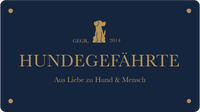When switching from the collar to the regular chest harness...

Many people notice that their dog becomes aggressive when wearing a collar . This is especially true for territorial breeds and unneutered males.
The dog starts barking, stiffens permanently whenever there is tension on the leash, and some even attack other dogs "out of nowhere." Often, pulling on the neck muscles only intensifies this behavior. The dog then becomes extremely agitated, perhaps even wheezing , and you really don't want to leave the house anymore. With particularly strong dogs, this often leads to the owner being unable to take the dog out at all: she can no longer control it. The dog's behavior escalates with each walk , the neighbors get upset, and the other dogs, in turn, react with anger towards the dog that behaves in its territory as if it is constantly threatened.
These owners often switch to a standard harness and discover that their dog now pulls with even more force than before . Whereas previously he jumped from left to right, practically testing every possible technique like an acrobat, he now pulls away, hunched over: always in the exact opposite direction to where his owner wants him to go. He might bark less, though, and he no longer threatens other dogs. He is completely focused on achieving his goal, this time without causing pain, and therefore more enthusiastic and simultaneously less aggressive.
Owners often recognize the paradox they are then confronted with:
1. Collar = Aggression = Pulling, but with jumping back
2. Chest harness = no aggression = excessive pulling
This is biologically determined and stems from the fact that the collar irritates the dog and also instills fear of pain. A harness, on the other hand, utilizes an innate reflex that we also use in scent work and hunting with dogs: The dog focuses on the strongest stimulus , blocks out everything else, and pulls towards it. You can recognize this by the hunched posture: The nose is as close to the ground as possible. Since there is no pain, the dog can no longer be jerked away. As a result, it is also less aggressive. At least initially. Many dogs develop aggression towards a harness because they are constantly prevented from pursuing the stimulus they are focusing on by pulling their body backward.
The owner tells the dog "Stop it!", the leash tightens, the dog leaps into the chase (stimulus focus), and hears another "Stop it!" accompanied by corresponding aggression from the owner. From the dog's perspective, this is maddening, and some dogs ultimately do go mad. Or old age arrives, hormone levels drop, strength diminishes, and the dog simply gives it up.
STURMFREI® offers an alternative approach by leading from the front. The dog doesn't react to the strongest stimulus because it doesn't experience being "pulled backward." It is easier to redirect and train. It doesn't experience pain from pulling like with a collar, so it no longer jumps from side to side and doesn't think that everyone it sees (other dogs) is a threat. It calms down.
Another positive effect is that the dog is more relaxed after the walk. The struggle on the leash tires the dog just as it does the human . Being outside is then no longer relaxing. For some dogs, this goes so far that they refuse to go for walks . They simply no longer want to be subjected to the pressure of the harness or collar. Physical symptoms often develop as a result, which later become apparent in the way the dog walks.
The STURMFREI® system is designed to make life easier for everyone. Even social interactions on a leash are no problem: triggers for fighting, such as extreme tension, heavy panting, and wheezing (threat signals), are eliminated , and dogs can see who is crossing their path. This is especially relevant for dogs in their own territory and leads to peaceful coexistence.
Leading from the front can significantly and permanently change a dog's life and health.
I will explain in detail here why most dogs can't help but pull wildly on their harnesses:

